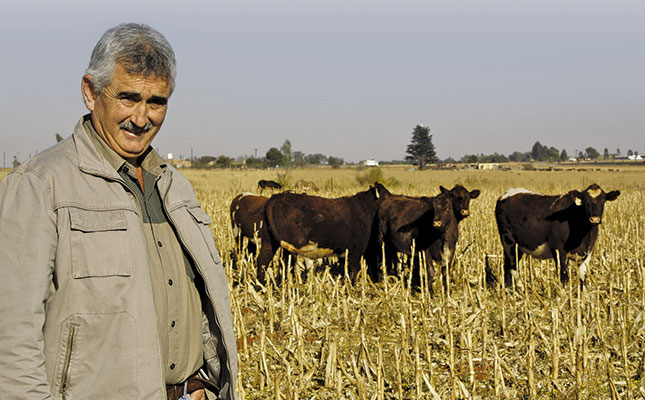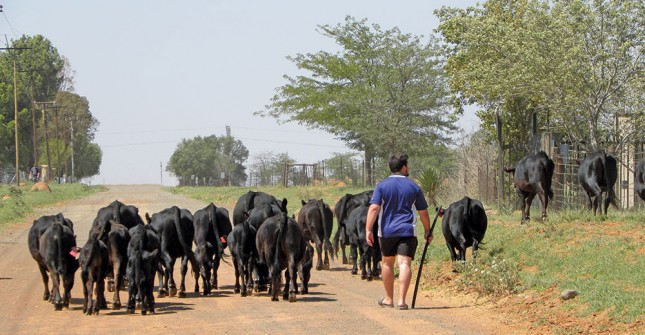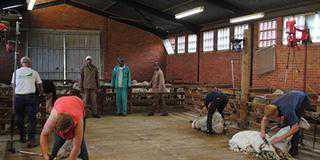
“The breed’s exceptional temperament, easy calving and growth make it one of the best options for profitable and sustainable beef production. The slogan ‘Beef Shorthorn breeds better’ has been proven over and over again.”
Research at MARC has shown the Shorthorn to achieve the best 200-day weight of any English breed. It’s combination of marbling and cutability is extremely rare and evidence of exceptional carcass quality, according to the American Shorthorn Association.
The Beef Shorthorn carries two copies of the GeneSTAR tenderness gene, meaning its meat is tender 97% of the time, compared to 78% in the Angus and 70% in the Hereford.
But for Niel reproductive efficiency is even more important. Females are highly fertile while the bulls are active, aggressive breeders, combining a high conception rate with minimum maintenance. Most heifers reach puberty by 360 days.
The Beef Shorthorn comes in a variety of colours, including white and red roan, and white. It is a medium-sized breed with a rectangular body shape. Strong pigmentation around the eyes makes it well-suited for the harsh extensive African environment.
“It’s often claimed that the Beef Shorthorn’s thick coat makes it susceptible to tick-borne diseases, but this thick winter coat is shed in summer,” says Niel. “And the thick winter coat benefits our animals greatly in the very cold North West winters, where below-zero temperatures are not uncommon.”
Niel follows two breeding seasons, using single-sire herds of 15 to 20 cows per two-year-old bull and 25 to 30 cows per older bull. The breeding seasons run from November to February and from mid-April to end of May. November breeding is set aside for females earmarked for artificial insemination. Up to 25% of the females are artificially inseminated.
“I use Australian, Canadian and American genetics in the AI programme and select on EBVs for 200-day growth, milk production and calving ease direct,” says Niel.
“Heifers are first mated at a minimum weight of 380kg to ensure that they are strong enough to properly take care of their calves.”
In the Niemen herd, calves are born at 6,5% to 6,8% of their dams’ average weight of 532kg. They grow rapidly to between 45% and 53% of the dam’s weight at weaning, at about seven months. A weaner’s weight of as high as 58% of its dam’s weight is not uncommon in summer on excellent forage. The herd’s average ICP is 385 days.
“I breed hardy, well-adapted animals that add value to any crossbreeding programme,” says Niel. “My cattle are bred, born and reared in a heartwater and redwater area and so far, I’ve only lost one to redwater.
“I use Virbac’s tick management programme and, in my opinion, the Beef Shorthorn is the most disease-resistant of all the European beef breeds. And in composite breeds, this resistance is evident.”
Niel is upbeat about the Beef Shorthorn’s future. “It’s our responsibility to re-introduce its exceptional qualities to the beef production fraternity. The Beef Shorthorn has been a popular breed in the past but it has, to some extent, disappeared from the scene during the last two or three decades,” he says.
“As breeders, we need to provide the best genetics that contribute to the long-term sustainability and profitability of the entire industry.
“The Beef Shorthorn has made an invaluable contribution to beef cattle production worldwide. It’s a breed to be reckoned with.”













